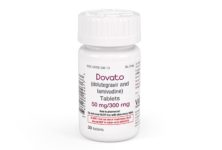Scientists announced important new developments in HIV treatment research at the 22nd International AIDS Conference (AIDS 2018) today.
This included new data on the efficacy and safety of the integrase inhibitor dolutegravir (DTG) and results from the first randomized clinical trial of a “kick and kill” strategy to potentially cure HIV. While ultimately disappointing, the cure study provides new insights to guide future research.
“Scientific progress has transformed HIV treatment since the dawn of antiretroviral therapy more than two decades ago,” Linda-Gail Bekker, President of the International AIDS Society and International Chair of AIDS 2018, said. “The studies presented at AIDS 2018 further advance our understanding of how best to treat HIV and move us closer to remission or cure.”
Today’s press conference highlighted four HIV treatment and cure studies, selected from nearly 3,000 scientific abstracts being presented at AIDS 2018.
Note: Press summaries are based on abstracts; final data presented at the conference may change.
Studies demonstrate efficacy of DTG plus lamivudine (3TC)
The two-drug regimen of DTG+3TC demonstrated non-inferior efficacy compared with a three-drug regimen of DTG plus tenofovir (TDF) and emtricitabine (FTC) when used as first-line treatment in two Phase III clinical trials. Since the introduction of antiretroviral therapy, combinations of three or more drugs have been the norm. Two-drug regimens may present an opportunity to reduce treatment costs and alleviate concerns about the long-term toxicity of HIV treatment.
Pedro Cahn of Fundacion Huésped in Argentina presented data from GEMINI-1 and GEMINI-2, identical, double-blind studies that together enrolled more than 1,400 treatment-naïve adults across sites in Europe, the Americas, Africa and the Asia Pacific region.
Following 24 weeks of treatment, a pooled analysis showed that DTG+3TC was non-inferior to DTG+TDF/FTC, with 93% of study participants in each arm achieving virologic suppression (defined as plasma HIV-1 RNA less than 50 copies/mL). The overall safety profiles were similar across both arms, and no treatment-emergent drug resistance was observed. [Summary based on submitted abstract; updated data may be presented on site.]
Abstract: Non-inferior efficacy of dolutegravir (DTG) plus lamivudine (3TC) versus DTG plus tenofovir/emtricitabine (TDF/FTC) fixed-dose combination in antiretroviral treatment-naïve adults with HIV-1 infection – interim data from the GEMINI Studies
Session: Antiretroviral Strategies (Forum, Tuesday, 24 July, 11:00-12:30)
Real-world data from Brazil shows positive impact of three-drug regimen including DTG
An analysis of data from more than 100,000 patients starting HIV therapy in Brazil’s public health system revealed that those receiving the three-drug regimen TDF+3TC+DTG were significantly more likely to achieve virologic suppression than those on other three-drug regimens that do not contain DTG. This study may help guide decision making in other countries that are introducing or considering DTG-containing regimens as first-line therapy.
Data presented by Mariana Veloso Meireles of the Ministry of Health of Brazil showed that among patients receiving the DTG-based regimen, 85.2% had their virus suppressed at six months. Patients receiving other regimens were at significantly higher risk of failing to achieve this milestone. For example, patients receiving 3TC+TDF plus efavirenz (EFZ), the second-most effective regimen, were at 42% higher risk of not achieving virologic suppression. [Summary based on submitted abstract; updated data may be presented on site.]
Abstract: Comparative effectiveness of first-line antiretroviral therapy regimens: results from a large real-world cohort in Brazil after the implementation of Dolutegravir
Session: Antiretroviral Strategies (Forum, Tuesday 24 July, 11:00-12:30)
DTG use by pregnant women may be linked to birth defects
A presentation on birth outcomes in Botswana, discussed by Rebecca Zash of the Beth Israel Deaconess Medical Center, detected a concerning early signal that neural tube defects (birth defects of the brain, spine or spinal cord) may be linked to DTG use from conception. In May 2016, Botswana introduced TDF+FTC+DTG as first-line HIV therapy for all adults, including pregnant women.
Preliminary data showed that among infants born to women receiving DTG-based HIV treatment from conception, four out of 426 (0.94%) had neural tube defects. For comparison, neural tube defects occurred in 14 out of 11,300 (0.12%) infants born to women receiving any non-DTG HIV treatment from conception. No neural tube defects were reported among the 2,812 infants born to women who initiated DTG during pregnancy. Further surveillance is needed to confirm and characterize this possible link. [Summary based on submitted abstract; updated data may be presented on site.]
Presentation: Surveillance for Neural Tube Defects following Antiretroviral Exposure from Conception
Session: Safety of Dolutegravir in pregnancy: Late breaking findings, interpretations, and implications (Elicium 2, Tuesday 24 July, 16:30 -18:00)
“Kick and kill” HIV cure study fails to reduce viral reservoirs
Antiretroviral therapy alone is unable to cure HIV because of an inaccessible pool of latently infected cells called the HIV reservoir. Sarah Fidler of Imperial College London presented results from the RIVER study, the first randomized controlled trial of a “kick and kill” strategy to reduce this reservoir. In this approach, one agent is used to activate the latent virus (the “kick”) while an HIV-specific vaccine boosts the immune system’s response (the “kill”).
In the RIVER study, 60 people living with HIV in the UK were randomized to receive antiretroviral treatment alone, or antiretroviral treatment plus the latency-reversing agent vorinostat and a therapeutic vaccine.
While the researchers observed robust vaccine-induced immune responses and vorinostat activity, there was no difference between the arms in viral reservoir levels, as measured by HIV-DNA copies per million CD4+ T-cells. Further analysis is underway to understand why this regimen failed to reduce the reservoir. [Summary based on submitted abstract; updated data may be presented on site.]
Abstract: A randomised controlled trial comparing the impact of Antiretroviral Therapy (ART) with a ‘Kick-and-Kill’ approach to ART alone on HIV reservoirs in individuals with primary HIV infection (PHI); RIVER trial


 ПОИСК ПО САЙТУ
ПОИСК ПО САЙТУ  поиск по ресурсному центру
поиск по ресурсному центру 



